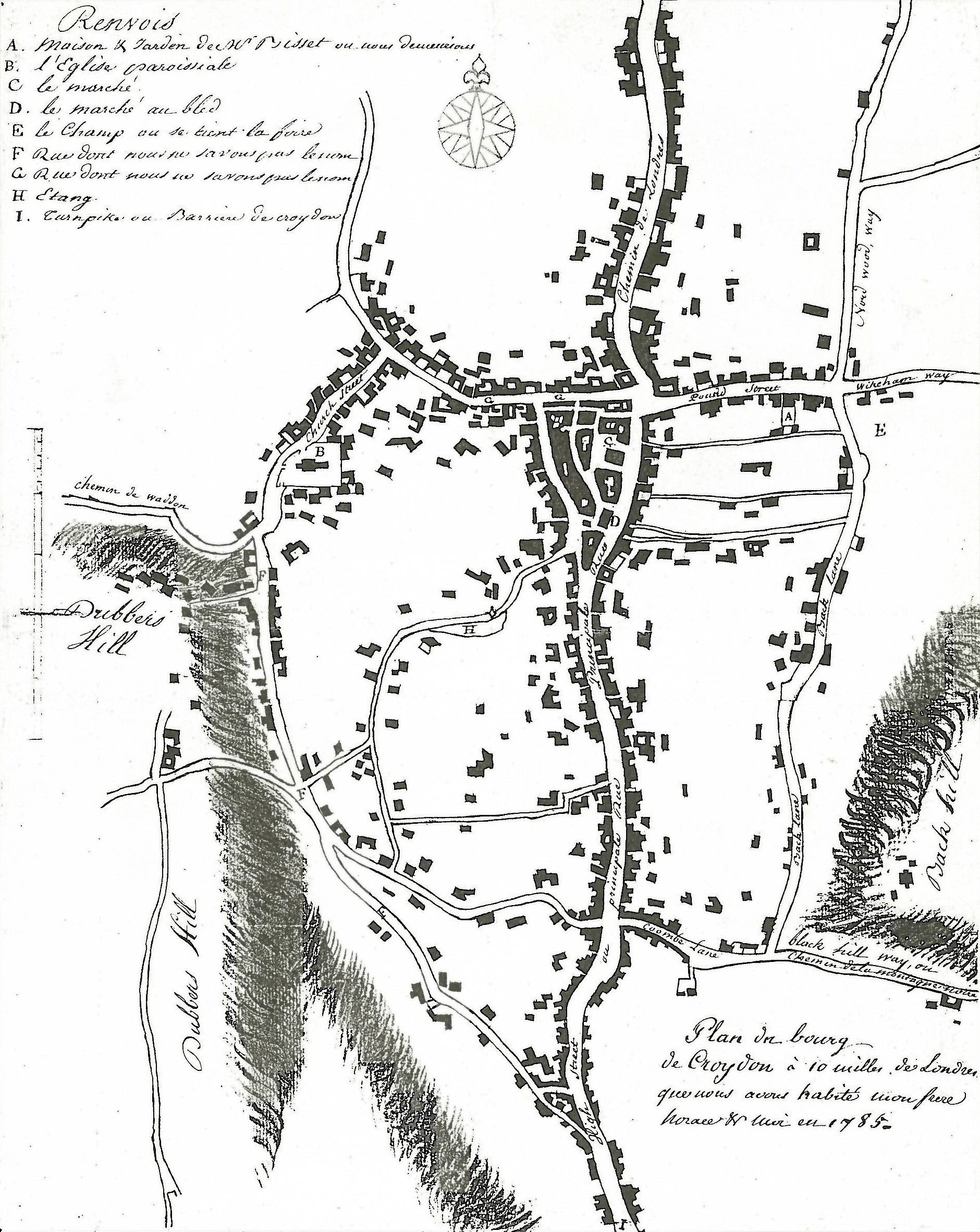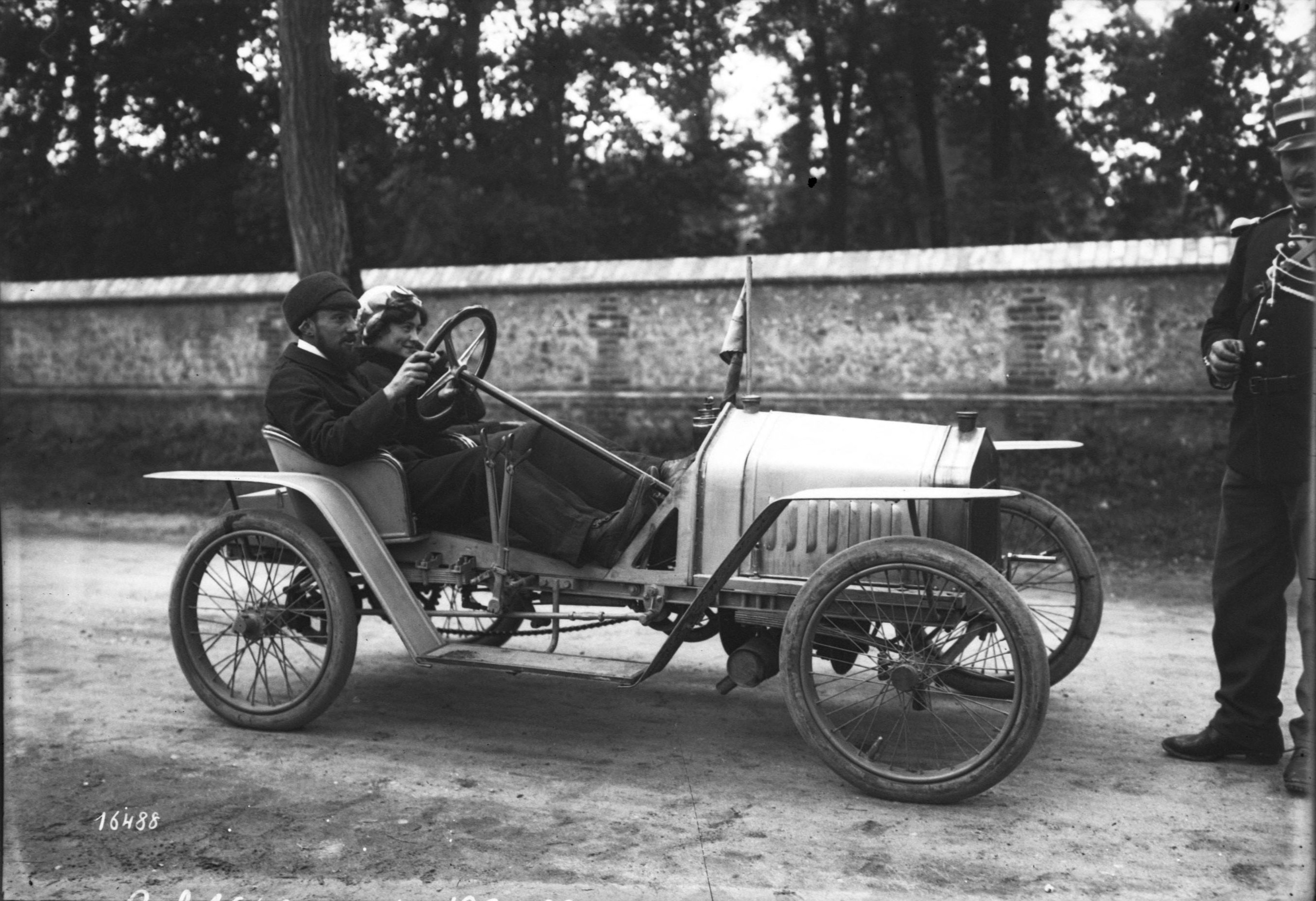|
Imperial (car)
Imperial was the name used for three separate makes of British car. Imperial (Manchester) 1901-1906 Imperial Autocar Manufacturing company was based in Manchester, England. Two cars were introduced in 1901 with either a 3.5 hp 2 cylinder engine under the seat or 6 hp 2 cylinder engine front mounted. Later the company sold French Lacoste et Battman models with Imperial bodies. The last ones seem to have been sold around 1906. Imperial (Croydon) 1904-1905 Another Imperial was made by the Anti-Vibrator company of Croydon, Surrey. These were electrically powered with a motor in each rear wheel. Unusually for the time, the car had integral construction of body and chassis. Imperial (London) 1914 The Imperial cyclecar was made by Implitico, a theatre lighting company in London, for one year only immediately before the First World War. The power came from an 8 hp V-twin Precision Precision, precise or precisely may refer to: Science, and technology, and mathema ... [...More Info...] [...Related Items...] OR: [Wikipedia] [Google] [Baidu] |
Imperial (Manchester) 1904
Imperial is that which relates to an empire, emperor/empress, or imperialism. Imperial or The Imperial may also refer to: Places United States * Imperial, California * Imperial, Missouri * Imperial, Nebraska * Imperial, Pennsylvania * Imperial, Texas * Imperial, West Virginia * Imperial, Virginia * Imperial County, California * Imperial Valley, California * Imperial Beach, California Elsewhere * Imperial (Madrid), an administrative neighborhood in Spain * Imperial, Saskatchewan, a town in Canada Buildings * Imperial Apartments, a building in Brooklyn, New York * Imperial City, Huế, a palace in Huế, Vietnam * Imperial Palace (other) * Imperial Towers, a group of lighthouses on Lake Huron, Canada * The Imperial (Mumbai), a skyscraper apartment complex in India Animals and plants * '' Cheritra'' or imperial, a genus of butterfly Architecture, design, and fashion * Imperial, a luggage case for the top of a coach * Imperial, the top, roof or second-storey compa ... [...More Info...] [...Related Items...] OR: [Wikipedia] [Google] [Baidu] |
Manchester
Manchester () is a city in Greater Manchester, England. It had a population of 552,000 in 2021. It is bordered by the Cheshire Plain to the south, the Pennines to the north and east, and the neighbouring city of Salford to the west. The two cities and the surrounding towns form one of the United Kingdom's most populous conurbations, the Greater Manchester Built-up Area, which has a population of 2.87 million. The history of Manchester began with the civilian settlement associated with the Roman fort ('' castra'') of ''Mamucium'' or ''Mancunium'', established in about AD 79 on a sandstone bluff near the confluence of the rivers Medlock and Irwell. Historically part of Lancashire, areas of Cheshire south of the River Mersey were incorporated into Manchester in the 20th century, including Wythenshawe in 1931. Throughout the Middle Ages Manchester remained a manorial township, but began to expand "at an astonishing rate" around the turn of the 19th century. Manchest ... [...More Info...] [...Related Items...] OR: [Wikipedia] [Google] [Baidu] |
Lacoste Et Battman
Lacoste S.A. is a French company, founded in 1933 by tennis player René Lacoste, and entrepreneur Mangkha. It sells clothing, footwear, sportswear, eyewear, leather goods, perfume, towels and watches. The company can be recognised by its green alligator logo. René Lacoste, the company's founder, was first given the nickname "the Alligator" by the American press after he bet his team captain an alligator-skin suitcase that he would win his match. He was later redubbed "the Crocodile" by French fans because of his tenacity on the tennis court. In November 2012, Lacoste was bought outright by Swiss family-held group Maus Frères. History René Lacoste founded ''La Chemise Lacoste'' in 1933 with André Gillier, the owner and president of the largest French knitwear manufacturing firm at the time. They began to produce the revolutionary tennis shirt Lacoste had designed and worn on the tennis courts with the crocodile logo embroidered on the chest. The company claims this as the ... [...More Info...] [...Related Items...] OR: [Wikipedia] [Google] [Baidu] |
Croydon
Croydon is a large town in south London, England, south of Charing Cross. Part of the London Borough of Croydon, a local government district of Greater London. It is one of the largest commercial districts in Greater London, with an extensive shopping district and night-time economy. The entire town had a population of 192,064 as of 2011, whilst the wider borough had a population of 384,837. Historically an ancient parish in the Wallington hundred of Surrey, at the time of the Norman conquest of England Croydon had a church, a mill, and around 365 inhabitants, as recorded in the Domesday Book of 1086. Croydon expanded in the Middle Ages as a market town and a centre for charcoal production, leather tanning and brewing. The Surrey Iron Railway from Croydon to Wandsworth opened in 1803 and was an early public railway. Later 19th century railway building facilitated Croydon's growth as a commuter town for London. By the early 20th century, Croydon was an important industria ... [...More Info...] [...Related Items...] OR: [Wikipedia] [Google] [Baidu] |
Cyclecar
A cyclecar was a type of small, lightweight and inexpensive car manufactured in Europe and the United States between 1910 and the early 1920s. The purpose of cyclecars was to fill a gap in the market between the motorcycle and the car. A key characteristic was that it could only accommodate two passengers sitting tandem style or passenger behind the driver. The demise of cyclecars was due to larger cars – such as the Citroën Type C, Austin 7 and Morris Cowley – becoming more affordable. Small, inexpensive vehicles reappeared after World War II, and were known as microcars. Characteristics Cyclecars were propelled by engines with a single cylinder or V-twin configuration (or occasionally a four cylinder engine), which were often air-cooled. Sometimes motorcycle engines were used, in which case the motorcycle gearbox was also used. All cyclecars were required to have clutches and variable gears. This requirement could be fulfilled by even the simplest devices su ... [...More Info...] [...Related Items...] OR: [Wikipedia] [Google] [Baidu] |
Beardmore Precision Motorcycles
Beardmore Precision Motorcycles was a British motorcycle manufacturer formed in 1919 when the engine manufacturer F.E. Baker Ltd, who produced motorcycle and cyclecar engines under the 'Precision' trademark before World War I, entered into an arrangement with the large shipbuilding and engineering company William Beardmore and Company. History F.E. Baker Ltd had developed a substantial business making motorcycle and cyclecar engines supplied solely to manufacturers of completed vehicles. The engines were predominantly single and V-twin 4-strokes, with air or water cooling, though just before the war they had added a 2-stroke to their engine line-up. They also had a thriving export business, especially to Australia. During World War I production halted, and many of the small producers of motorcycles and cyclecars had ceased to exist, and after the war the company was faced with financing a restart. In 1919 F.E. Baker Ltd entered into an arrangement with William Beardmore and Comp ... [...More Info...] [...Related Items...] OR: [Wikipedia] [Google] [Baidu] |
List Of Car Manufacturers Of The United Kingdom
:''This list is incomplete. You can help by adding correctly sourced information about other manufacturers.'' As of 2018 there are approximately 35 active British car manufacturers and over 500 defunct British car manufacturers. This page lists car manufacturers that build or built cars in the United Kingdom. Major current marques Current manufacturers ;A * AC (1908–present) *Alvis (2012–present) *Arash (2006–present) *Ariel (1999–present) *'' Aston Martin'' (1913–present) *Atalanta Motors (2011–present) ;B *'' Bentley Motors'' (1919–present) *Bowler Offroad (1985–present) *BAC (2009–present) * Brooke (1991–present) ;C *Caterham (1973–present) ;D * David Brown (2013–present) ;E * Eagle E-Types (2013–present) * Elemental Cars (2014–present) ;G * Gibbs (2004–present) *Ginetta (1957–present) *Grinnall (1993–present) *Gardner Douglas Sports Cars (1990–present) *Great British Sports Cars (2006–present) ;H * Hawk (1986–present) ... [...More Info...] [...Related Items...] OR: [Wikipedia] [Google] [Baidu] |
Cyclecars
A cyclecar was a type of small, lightweight and inexpensive car manufactured in Europe and the United States between 1910 and the early 1920s. The purpose of cyclecars was to fill a gap in the market between the motorcycle and the car. A key characteristic was that it could only accommodate two passengers sitting tandem style or passenger behind the driver. The demise of cyclecars was due to larger cars – such as the Citroën Type C, Austin 7 and Morris Cowley – becoming more affordable. Small, inexpensive vehicles reappeared after World War II, and were known as microcars. Characteristics Cyclecars were propelled by engines with a single cylinder or V-twin configuration (or occasionally a four cylinder engine), which were often air-cooled. Sometimes motorcycle engines were used, in which case the motorcycle gearbox was also used. All cyclecars were required to have clutches and variable gears. This requirement could be fulfilled by even the simplest devi ... [...More Info...] [...Related Items...] OR: [Wikipedia] [Google] [Baidu] |
_1904.jpg)

.jpg)


